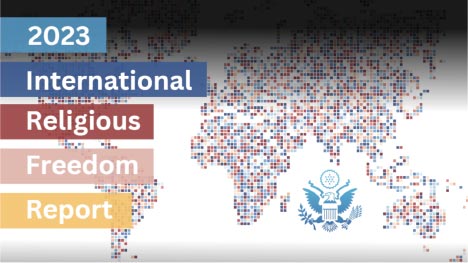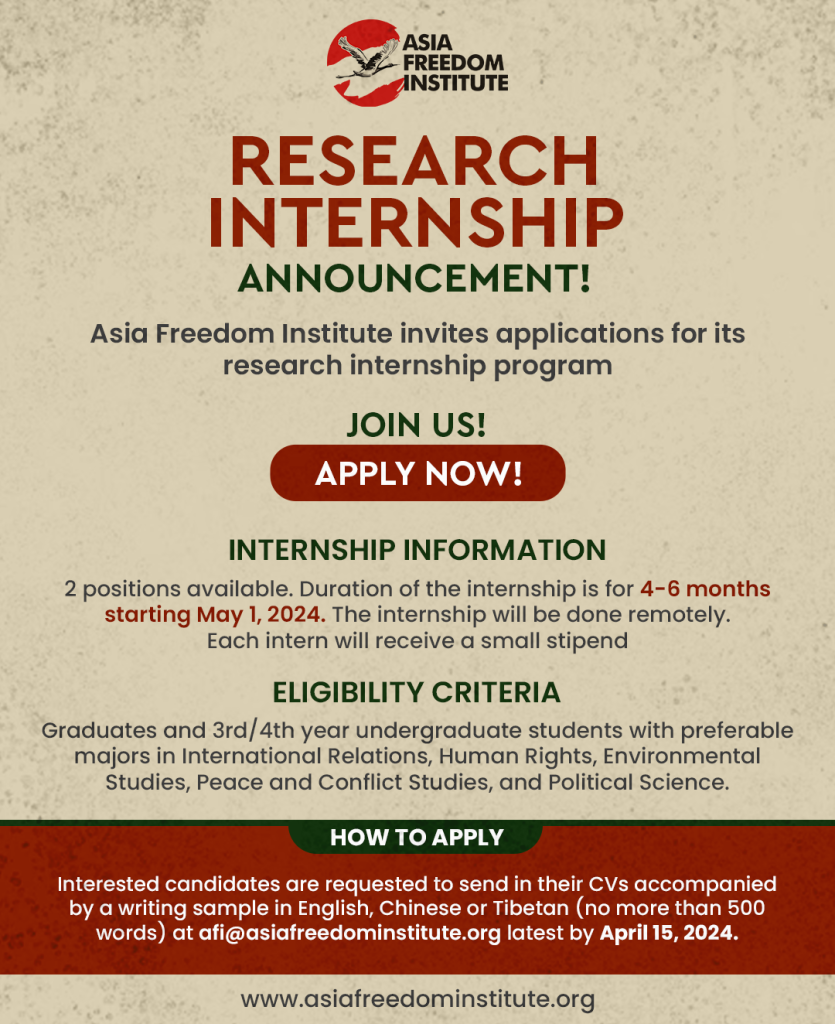The U.S. State Department’s 2023 International Religious Freedom Report on China, which includes separate section on East Turkestan, Hong Kong, Macau and Tibet, concludes that the Chinese government “continued its multiyear campaign of “Sinicization” to bring all religious doctrine and practice in line with CCP doctrine, which included requiring clergy of all faiths to attend political indoctrination sessions, suggesting content for sermons that emphasized loyalty to the CCP and the state, and pushing for the “harmonization” of religion with a Han-centric conception of Chinese traditional culture.”
There are several mentions of the September 1, 2023 administrative measure requiring monasteries, churches, mosques, temples, and other “places of religious activity” to uphold the leadership of the CCP, implement “Xi Jinping Thought on Socialism with Chinese Characteristics,” and promote the “Sinicization” of religion.
There is reference to the Chinese government’s efforts to remove “Arab” architectural features such as domes and minarets from Hui mosques in multiple provinces. The report also says that “authorities continued to require CCP members and members of the armed forces to be atheists and forbade them to engage in religious practices.”
With regards to the two-year provisional agreement on the appointment of bishops between the government and the Holy See, originally signed in 2018 and renewed in 2020 and 2022, the report states that “during the year, the Holy See publicly indicated the PRC had violated the agreement on multiple occasions, with the Holy See Foreign Minister-equivalent saying Holy See diplomats were attempting to negotiate “improvements.”
Excerpts from the East Turkestan section:
The U.S. government estimates that since 2017, authorities have detained more than one million Uyghurs, ethnic Kazakhs, Hui, and members of other Muslim groups as well as some Christians in specially built internment camps or converted detention facilities in the Xinjiang Uyghur Autonomous Region (XUAR) under the national counterterrorism and regional counter extremism laws. Several human rights groups estimate the number of individuals detained in internment camps or other facilities was higher, possibly including up to 3.5 million.
During his visit to the region in August, President Xi Jinping promoted the government’s ongoing policy of “Sinicizing” Islam and bringing religious doctrine in line with CCP ideology and called for stopping “illegal religious activity.” Media, academics, and NGO advocacy groups reported authorities continued to implement a variety of methods, including home inspections, to ensure families were not observing religious practices such as praying and observing Ramadan.
Data from 2020 (the most recent available) estimated that nearly 900,000 Uyghur children, including some preschool aged, were involuntarily separated from their families and living in boarding schools or orphanages, where they studied ethnic Han culture, the Mandarin language, and CCP ideology.
Excerpts from the Tibet section:
The CCP continued to promote Sinicization policies aimed at reinterpreting and rewriting religious doctrines to bring them into accordance with CCP ideology and emphasize loyalty to the CCP and the state. Authorities required monks and nuns to undergo political indoctrination and individuals entering monastic training to pledge loyalty to the CCP and reject “splittism.” TAR authorities required clergy and Tibetan government employees to denounce the Dalai Lama and express allegiance to the government-recognized Panchen Lama, Chokyi Gyalpo, who is also referred to by his secular name, Gyaltsen Norbu. The Dalai Lama-recognized Panchen Lama, Gedhun Choekyi Nyima, disappeared in 1995 at the age of six along with his family, and his whereabouts remained unknown.
Authorities continued to require Buddhist monasteries to translate texts from Tibetan to Mandarin in what observers said was an effort to erase the Tibetan language. Authorities also continued to force monasteries to display portraits of CCP leaders and Tibetans to replace images of the Dalai Lama and other lamas in their homes with portraits of CCP leaders. U.S. officials underscored that decisions on the Dalai Lama’s succession should be made solely by Tibetans, free from interference, and raised concerns regarding the disappearance since 1995 of Panchen Lama Gedhun Choekyi Nyima.
The PRC continued to tightly restrict access to the TAR, and denied U.S. diplomats permission to visit the TAR or Tibetan autonomous prefectures (TAPs) during the year.In an effort to Sinicize the population, authorities forced approximately one million children (estimated by one NGO to be 78 percent of all Tibetan children) to attend boarding schools that emphasized Han Chinese culture and required the use of Mandarin.
Since 1999, China has been designated as a “Country of Particular Concern” (CPC) under the International Religious Freedom Act of 1998 for having engaged in or tolerated particularly severe violations of religious freedom. On December 29, 2023, the Secretary of State redesignated China as a CPC.


